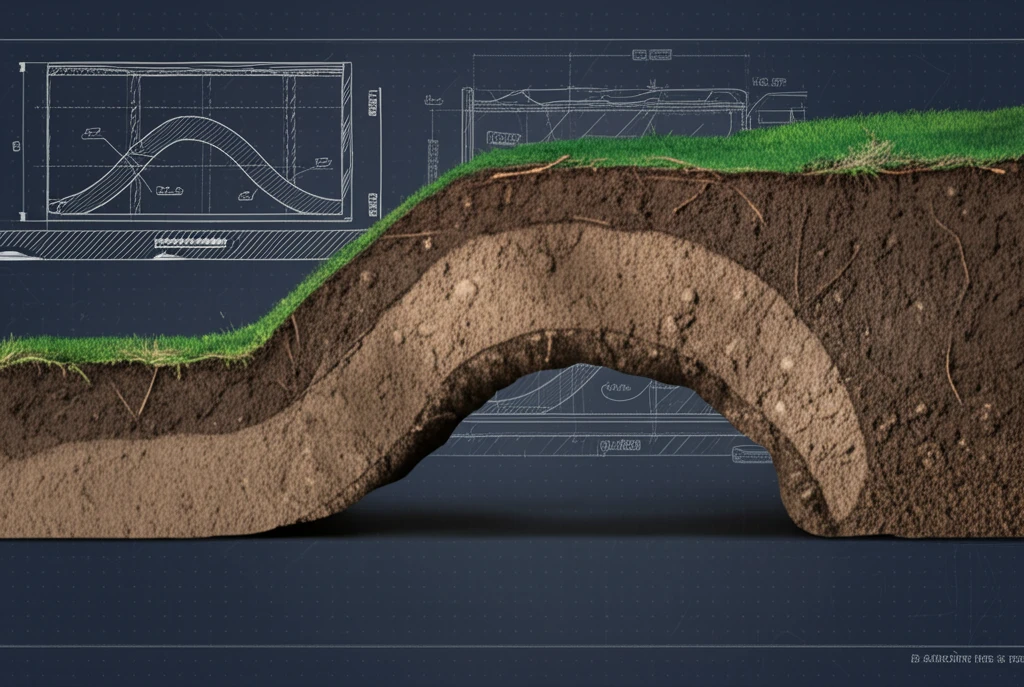
Soil Arching Simplified: How New Research Streamlines Embankment Design
"Engineers gain ground with simplified soil arching techniques, enhancing the safety and efficiency of embankment construction."
In the realm of geotechnical engineering, the construction of stable and durable embankments is a critical challenge. Embankments, often used in road and railway construction, require careful design to withstand soil displacement and ensure long-term stability. Traditional methods can be complex and require numerous parameters, leading to increased design time and potential inaccuracies. Recent research has focused on simplifying these methods, making them more accessible and reliable for engineers on the ground.
A key area of focus has been on soil arching, a phenomenon where soil forms a natural arch to redistribute loads away from areas of displacement. Understanding and accurately modeling this behavior is essential for designing effective support systems, particularly in geosynthetic-reinforced pile-supported embankments (GRCSEs). These structures combine the strength of reinforced soil with the load-bearing capacity of piles, offering a robust solution for challenging soil conditions. However, the complexity of soil-structure interaction has often hindered the widespread adoption of these techniques.
This article explores the innovative approaches presented in recent studies to streamline the design process for soil arching in embankments. By reducing the number of required parameters and simplifying the calculations, engineers can now achieve more efficient and reliable designs. These advancements not only save time and resources but also enhance the safety and durability of embankment construction.
The Evolution of Soil Arching Models

Soil arching models are crucial for predicting how soil will behave under various loads and displacements. The Ground Reaction Curve (GRC) is a fundamental tool used to represent the relationship between soil displacement and pressure. Historically, GRC models have been complex, requiring numerous parameters to accurately capture the soil's behavior. For instance, the original GRC model, known as the OABCDE curve, involved six points and multiple parameters to define its shape. This complexity made it challenging for engineers to implement in practical designs.
- Reduced number of parameters required for design.
- Easier implementation in practical engineering applications.
- Minimized uncertainties in soil behavior prediction.
- More efficient and reliable embankment designs.
Conclusion: Embracing Simplicity for Enhanced Stability
The progressive development of soil arching models represents a significant advancement in geotechnical engineering. By simplifying the design process and reducing the number of required parameters, engineers can now create more efficient, reliable, and conservative embankment designs. The simplified GRC model not only saves time and resources but also enhances the safety and durability of these critical infrastructure components. As research continues to refine these techniques, the future of embankment construction looks increasingly stable and secure.
